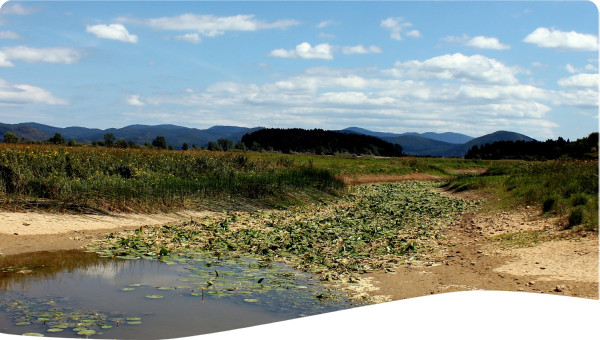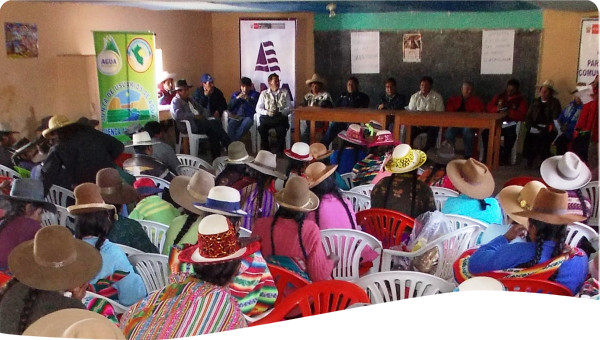Nepal is particularly vulnerable to climate change impacts. Mountain ranges within Nepal are home to extensive glaciers which are experiencing widespread retreat due to average temperature rise. Glacial discharge in turn impacts the hydrological regimes of rivers downstream and causes rapid growth of glacial lakes; glacier lake outburst floods (GLOFs) are one of many climate change phenomena with the potential to pose extreme risk to populations, infrastructure, etc.
Many of Nepal’s climate change impacts faced are highly or directly related to water resources. The 2010 NAPA identified that of these 75 districts, 22 are highly vulnerable to drought, 12 to GLOFs, and 9 to flooding. The increased risk posed from these water-related calamities is just one aspect of the acute requirements for water resource management due to climactic changes within Nepal Nepal has been on the Least Developed Countries (LDCs) list since 1971 and their National Adaptation Programme of Action (NAPA) was submitted to UNFCC in 2010. Though Nepal was the 45th LDC to submit its NAPA, it has since become a pioneer in climate change adaptation planning. This is because, in 2011, it was the first LDC to issue a national framework on Local Adaptation Plans for Action (LAPAs) to strengthen and implement their NAPA prioritized adaptation actions. The Government of Nepal (GON) endorsed the National Climate Change Policy in 2011 that supports NAPA and LAPA implementation. The Policy specifies to "allocate at least 80% of available funds for field level climate change activities". The LAPAs that ensure full participation of climate vulnerable local communities to adapt to climate change will be the focus of this case study which will examine the LAPAs and their climate change adaptation actions from a water resources perspective.
Beginning in late 2015, JVS/GWP-Nepal began to design a study to further Nepal’s understanding of the relationship between its climate change adaptation priorities and water resource management. 101 of the LAPAs produced were reviewed to identify adaptation actions and associated budgets related to water resources. The report preparation also required extensive consultation with community members and government agencies. Each LAPA includes detailed descriptions of the largest threats faced by their locality due to climate change. The first approach of the study was to examine these identified threats. JVS/GWP-Nepal grouped these into 8 of the most commonly identified potential impacts:
- drying-up of water sources;
- effects of landslides on irrigation and drinking water supply;
- decrease in agriculture production from floods, landslides and drought;
- increase in drought-induced barren land;
- damage to agricultural land due to river and stream floods and bank cutting;
- infestation of disease and pest (domestic plants and animals);
- damage to infrastructure from natural disasters such as landslides and floods, including from fire and ice melting; and
- lowering down of groundwater table.
JVS/GWP-Nepal next categorized all the water-related adaptation actions proposed in the reviewed LAPAs into 7 categories: infrastructure; community protection; water resource conservation and rainwater harvesting; agriculture; landslide and flood control; Indigenous knowledge and water mill; and capacity building. These 7 water-related adaptation action categories were used to further observe the budget allocated for each one.
More than 50 percent of the LAPAs studied addressed water issues and included proposed budgets of up to 50 percent for planned activities that would tackle these. Many of these focused on infrastructure development: dams, irrigation and drinking water supply systems, and micro hydro. In response, the study recommended establishing a core technical unit at local levels for timely support in planning, budget management, and implementation. The Ward Citizen Forum body was identified as an appropriate entry point for LAPA activities. Other GWP recommendations that complemented infrastructure work, such as promoting forest conservation, planting of water retaining species, and water conservation practices rounded out learning from the study. Nepal’s Ministry of Environment, the climate change national focal point, and Water and Energy Commission Secretariat put the study’s findings to use in formulating and implementing climate adaptation activities. Then Jalsrot Vikas Sanstha/GWP Nepal continued to support Nepal’s drive towards climate change resilience through participation in the working group on water and energy for Nepal’s preparation of its National Adaptation Plan (NAP). This included preparation of two separate stocktaking reports for the water resources and agriculture sector as inputs for the NAP formulation process.
While it was discovered that adaptation actions related to water resources have already been given some priority, the focus on building water infrastructure may not be advantageous without adaptation actions focusing on capacity building as well.
Monitoring and evaluating national initiatives, as they are developed and implemented, can reveal useful information. Reviewing these initiatives from a broad perspective allows reflection to ultimately improve outcomes.
Strategic communication plans, which can for example include workshops and identification of key partners, should be paired with any study carrying important information in order to support evidence-based decision-making.
Non-governmental organizations and other third-party organizations can be used to provide a critical and objective review of governmental initiatives.
 Case studies
Case studies

